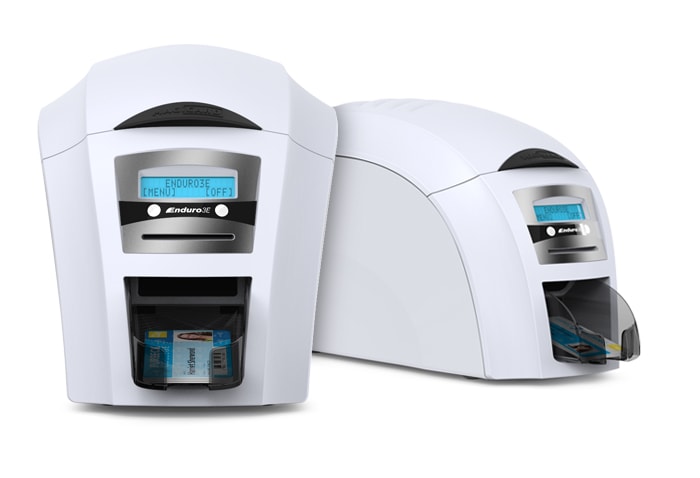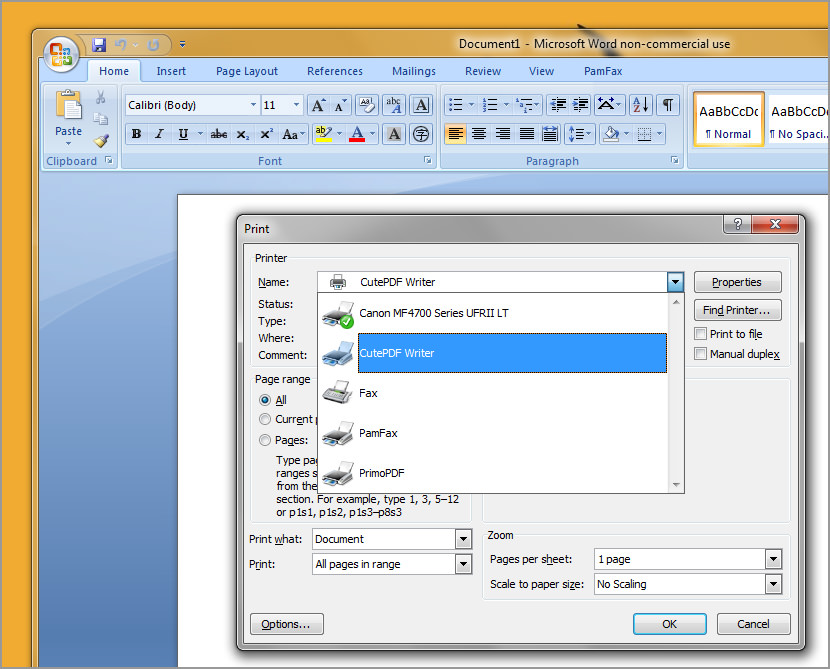Recommended Printer Driver Updates. We discuss printer driver updates for all main brands of printers, if you use a brand that is not mentioned, then simply run the drivers scan using the download link at the end, our database will almost certainly contain drivers for your printer type and model.
- Download Printer Driver For Windows 10
- Download All Printer Drivers Windows 10
- Custom Printers Driver Downloads
- Custom Printers Driver Download
- Drivers Printers free download - CopyTrans Drivers Installer, Adaptec ASPI Drivers, My Drivers, and many more programs.
- Download Drivers for Legacy Platforms Select Download Windows 10 Windows 8 Windows 7 and Vista Windows 2000 and XP Windows 95, 98, and ME VL Printer Driver 110K VL Advanced Driver XL Firmware Driver Items to Download.
- Use the dropdown menus below to find the drivers and downloads you want. You can also search by product or keyword. Lumidigm drivers can be found in the Lumidigm Developer Center.
Build a basic v4 printer driver by using the driver development wizard in Microsoft Visual Studio 2019 to select the minimum set of features to create a functional printer driver.
The instructions in this topic will focus on the steps required for building a driver, and will not explain the many printer driver options available in the wizard.
The intent of this topic is to provide an introduction to the process involved when developing a printer driver in Visual Studio 2019.
A more detailed look at the printer driver options is provided in Exploring the driver options in the wizard.
Prerequisites
Follow the guidance in Download the Windows Driver Kit (WDK)
Install Visual Studio 2019 with the Desktop development with C++ workload and the correct version of the Windows 10 SDK.
Install the WDK for Windows 10, version 2004.
Select features for the basic driver
In Visual Studio, in the main menu, select File > New > Project.
In the New Project window, in the top-right search box, type printer driver v4 and press enter. This will retrieve all driver templates whose names contain the search text.
In the middle pane, select Printer Driver V4.
Type a name for your driver in the Name field, and then select OK. For example, you could type MyV4PrintDriver.
In the Create a v4 Print Driver Wizard, under Choose the driver rendering type:, select V4 print driver with custom rendering filters (accepts XPS only).
Leave all other options at their default settings and select Next.
In the Setup information section of the wizard, leave all options at their default settings, then select Next.
In the Setup information (page 2) section of the wizard, leave all options at their default settings, then select Next.
Microsoft Visual Studio uses the preceding selections to generate the project files for MyV4PrintDriver.
Verify the generated driver files
Navigate to the folder for the generated driver files. For example, if you named your project MyV4PrintDriver, then by default, the files would be saved to the following location: My Documents > Visual Studio 2019 > Projects > MyV4PrintDriver > MyV4PrintDriver.
Verify that the folder contains the following files:
File name File type MyV4PrintDriver.gpd Printer description file MyV4PrintDriver.inf Setup information file MyV4PrintDriver.vcxproj C++ Project file MyV4PrintDriver.vcxproj.filters C++ Project filters file MyV4PrintDriver-manifest.ini Configuration settings file (the print driver manifest) V4PrintDriver-Intellisense.js JavaScript file for Intellisense V4PrintDriver-Intellisense-Windows8.1.js JavaScript file for Intellisense

Notice from the preceding table that one of the files that is created is an INF file. Note that Visual Studio created a skeletal INF file that has to be completed so that it can be used to install the driver.

Create a unique PrinterDriverID for the driver
In the Visual Studio Tools menu select Create GUID.
Select option 4. Registry Format and select the Copy button.
In Visual Studio, in the Solution Explorer, expand the MyV4PrintDriver node.
Select Driver Files, then in the Properties window, look at the value for the Unique Identifier field. Replace this value with the GUID you generated using Paste.

Complete the INF file
In the MyV4PrintDriver project there should be an entry for Driver Files. Open this and the file MyV4PrintDriver.inf should be listed. Open this file.
1. Update the Copyright notice
The first 2 lines of the INF file are the copyright notice for the driver package.
Line 1 contains the year and name of your company. Replace the characters YYYY with the current year and replace the characters <Your manufacturer name> with the name of your company.
Line 2 describes the contents of the driver INF including Manufacturer name and device Model information. Replace the characters <Your manufacturer name> with the name of your company and replace the characters of <Printer Model> with the model name of the printer supported by the driver.
For example, if the year is 2020 and your company's name is Fabrikam, and the print device model is 1234, you would type the following:
2. Verify the [Version] section is correct
Find the line containing [Version].
Check and make sure that you see this line:
Check and make sure that you see this line:
3. Configure the [SourceDisksFiles] section
Find the line containing [SourceDisksFiles].
Below this type the following lines:
4. Configure the [DriverFiles] section
Find the line containing [DriverFiles].
Below this type the following lines:
5. Configure the [Standard.NT$ARCH$] section
Find the line containing [Standard.NT$ARCH$].
This section references the Install section of the INF for each model. For example, if the model of your printer is Fabrikam 1234, then you would type the following:
6. Add PrinterDriverID to the INF file


In Visual Studio, in the Solution Explorer, expand the MyV4PrintDriver node.
Select Driver Files, then in the Properties window look at the value for the Unique Identifier field. This is the driver ID (the GUID). Highlight it and copy it.
In the INF file, in the [Standard.NT$ARCH$] section, type the following line:
And then after the comma, paste the GUID that you copied in the preceding step. The completed [Standard.NT$ARCH$] section should look like the following:
7. Configure the [Strings] section
Find the line containing [Strings].
Below this you will find the definition of the ManufacturerName string. Replace the characters <Your manufacturer name> with the name of your company to provide a manufacturer's name for the target printer and delete the rest of the line containing the ;TODO:
For example, if your company's name is Fabrikam, you would type the following:
8. Save the INF file
When you complete the INF file, it should look like the following:
Update the Driver Files list
In Visual Studio, in the Solution Explorer, expand the MyV4PrinterDriver node.
Select the file MyV4PrintDriver.gpd and drag it to the Driver Files node.
Do the same with MyV4PrintDriver-manifest.ini.
Add the Pipeline Config file to the driver package
In the Solution Explorer, select and hold (or right-click) MyV4PrintDriver project, then select Properties.
Autocad 2002 free download - F1 2002, Autocad Tools 2002 (Windows 95/98/NT), Madden NFL 2002, and many more programs. Click on the above link to download USB driver installer; Once the download is complete open the Downloads folder; Double-click on the.exe file; From the 'WinRAR self-extracting archive' dialogue box, click 'Install' From the 'User Account Control' dialogue box, click 'Yes' From the '2002 Design, Inc. USB Download Interface Device Installer. 2002 design driver download for windows 10.
In the MyV4PrintDriver Property Pages window, expand Configuration Properties in the left pane.
Expand Driver Install, then select Package Files. Do the following in the right pane:
Navigate to the project directory.
Navigate down in to the MyV4PrintDriver Render Filter directory.
Select the file MyV4PrintDriverRenderFilter-PipelineConfig.xml and press Open.
Select OK.
Add a reference to the render filter to the driver package
In Visual Studio, in the Solution Explorer, expand the MyV4PrinterDriver node.
Select and hold (or right-click) the References node -> select Add Reference.
Select the check box for MyV4PrintDriver Render Filter, then select OK.
Download Printer Driver For Windows 10
Configure the driver solution for debugging and deployment
Download All Printer Drivers Windows 10
In the Solution Explorer, select and hold (or right-click) MyV4PrintDriver project, then select Properties.
In the MyV4PrintDriver Property Pages window, expand Configuration Properties in the left pane.
Expand Driver Install, then select Deployment. Do the following in the right pane:
Ensure that the Target Computer Name is configured. If not, select '..' and follow the prompts in the Configure Devices wizard to set up a remote target computer.
Check Remove previous driver versions before deployment.
Select Install/Reinstall and Verify, then select Default Printer Driver Package Installation Task from the drop-down box.
Type the name of the driver in the Optional Arguments field (without any quotes around the name).
Select OK.
Configure Driver Signing
In the Solution Explorer, select and hold (or right-click) MyV4PrintDriver project, then select Properties.
In the MyV4PrintDriver Property Pages window, expand Configuration Properties in the left pane.
Expand Driver Signing, then select General.
In the right pane, confirm that Sign Mode is set to Test Sign.
Select Test Certificate, then select Create Test Certificate.. from the drop-down box.
Select TimeStampServer, then select Verisign from the drop-down box.
Select OK.
Build and deploy the driver
In Solution Explorer, select and hold (or right-click) Solution MyV4PrintDriver (2 projects), and select Build Solution.
When the build process is complete the driver will automatically be installed. Make sure that there are no errors in the Output window.
Test the driver
Create a print queue using either plug-and-play or the Add Printer Wizard.
For more information about INF files for the v4 printer driver, see V4 Driver INF.
Note
In addition to the files in the preceding table, notice that a MyV4PrintDriver Render Filter folder was created. This is the render filter project template and it provides a good foundation for building an XPS rendering filter and an XPS filter pipeline configuration file. For more information about XPS rendering filters, see XPSDrv Render Module, and to see an example of an XPS rendering filter, see the XPS Rasterization Filter Service sample.
-->Custom Printers Driver Downloads
The driver samples in this directory provide a starting point for writing a custom print driver for your device.
Custom Printers Driver Download
| Sample | Description |
|---|---|
| Print Auto Configuration | Demonstrates how to implement Unidrv-based and PScript5-based drivers to leverage the inbox support for auto-configuration. The sample works only when used with the standard TCP/IP port monitor or the Network-Connected Device (NCD) port monitor. |
| Common Property Sheet UI | An application that causes the Common Property Sheet User Interface (CPSUI) to call the Windows print spooler to create property sheet pages for the system's default printer. |
| OEM Printer Customization Plug-in Samples | The OEMDLL samples are an illustration of OEM customization plug-ins. The BITMAP, OEMPS, OEMUI, OEMUNI, OEMPREAN, CUSTHLP, SyncSet, ThemeUI, PSUIRep, and Watermark samples do not affect the printer output. They are only examples of how to build OEM Customization DLLs of various types. |
| OpenXPS Documents | Contains a set of documents that were generated from a variety of sources, including those generated from the Windows Presentation Foundation in the .NET Framework and from the Microsoft XPS Document Writer (MXDW). They have been included to provide you with a few documents that exercise a variety of features of the XML Paper Specification. |
| XPS Documents | Contains a set of documents that were generated from a variety of sources, including those generated from the Windows Presentation Foundation in the .NET Framework and from the Microsoft XPS Document Writer (MXDW). They have been included to provide you with a few documents that exercise a variety of features of the XML Paper Specification. |
| Print Pipeline Simple Filter | Shows how to use the print pipeline's filter interfaces. |
| Printer Extension | Demonstrates how to use .NET to build a customized, desktop UI for a v4 print driver. This .NET application uses PrintTicket, PrintCapabilities and Bidi in order to communicate with the print system and is suitable for inclusion in a v4 print driver. |
| Print Driver Constraints | Demonstrates how to implement advanced constraint handling, and also PrintTicket/PrintCapabilities handling using JavaScript. |
| USB Host-Based Print Driver | Demonstrates how to support host-based devices that use the v4 print driver model, and are connected via USB. |
| Print USB Monitor and BiDi | Demonstrates how to support bidirectional (Bidi) communication over the USB bus, using JavaScript and XML. This sample supports bidirectional status while not printing, and unsolicited status from the printer while printing. |
| WSDMon Bidi Extension | Demonstrates how to use an XML extension file to support bidirectional (Bidi) communication with a WSD connected printer. |
| XPSDrv Driver and Filter | This sample is intended to provide a starting point for developing XPSDrv printer drivers and to illustrate the facility and potential of an XPSDrv print driver. This goal is accomplished by implementing a number of real-world features within a set of XPS print pipeline filters that are configured through a configuration plug-in that supports custom UI content and PrintTicket handling. |
| XPS Rasterization Filter Service | An XPSDrv filter that rasterizes fixed pages in an XPS document. Hardware vendors can modify this sample to build an XPSDrv filter that produces bitmap images for their printers or other display devices. |

